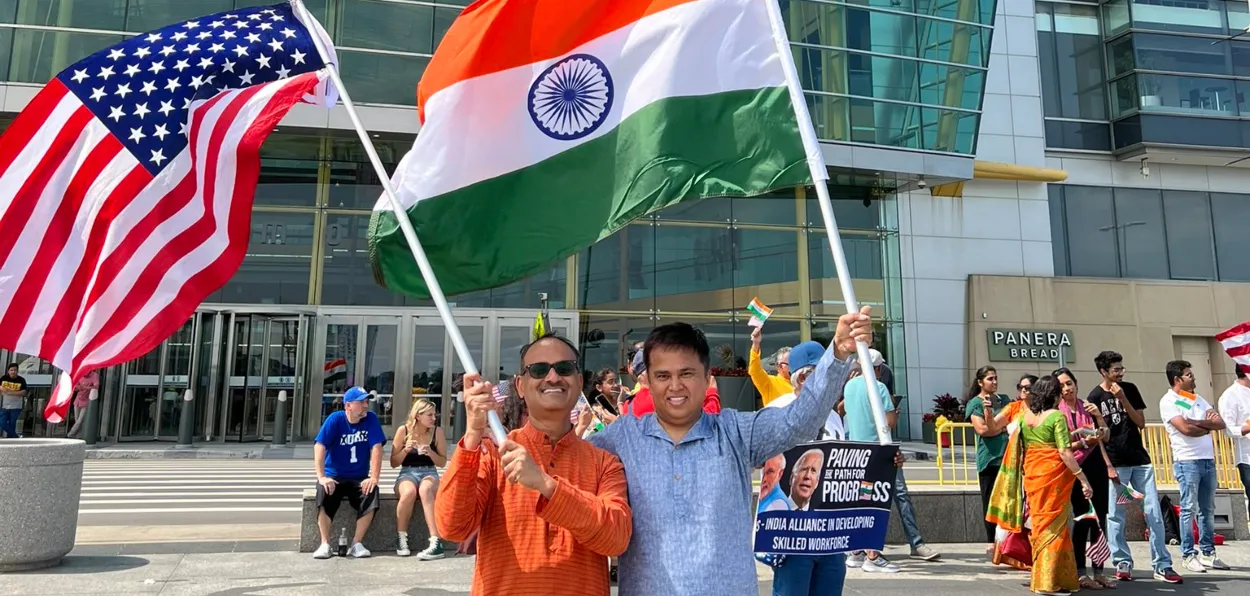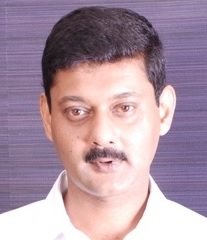
 Rajeev Narayan
Rajeev Narayan
When the US government announced a one-time surcharge of $100,000 on new H-1B visa petitions from September 21, many Indians in the United States felt a long-dormant tremor suddenly cracking open the ground beneath them. The move has been presented as a reform, but for the Diaspora, it feels like a rupture in trust.
After decades of building lives, contributing to American innovation and raising children who straddle two worlds, Indians in America now watch each new ripple in policy with mounting anxiety.
Take Nisha Rao, a data scientist in Austin, Texas, who moved to the US in 2015 on an H-1B visa and has since worked her way to the moment she could apply for permanent US residence. When the announcement hit, Nisha confessed that she felt a “sudden gut punch”. “What I assumed was an incremental risk has now become existential. I worry for my children’s schooling, my ability to travel even for emergencies in India and constantly wonder whether my career will be cut short,” she said.
Similar sentiments echo across states. In California, Ravi Sharma, a senior engineer with a Fortune 500 company, admitted that he had seriously debated cancelling a planned visit to Hyderabad, unsure whether US re-entry would be allowed under the evolving interpretations of the new norms. These norms claim to exempt renewals and transfers, but there is ambiguity and the possibility of much reinterpretation, one that leaves Nisha and Ravi very uneasy. Legal experts have also been cautioning Indians that the new laws are too vague to invite lawsuits or regulatory creep. The reality is stark—those who took stability as a surety are now tethered to a knife’s edge every single day.
Slew of Factors Killing the Dream
The visa fee hike may be the trigger, but it doesn’t stand alone. It sits atop a rising stack of pressures bearing down on Indian professionals in America. First, there is social backlash. Across social media, loud voices have emerged, demanding that Indian immigrants “go home”, accusing them of usurping jobs and resources. A viral video that surfaced in July showed an Indian accosted on an American street: “Why are you in my country? Go back to India,” the aggressor yelled. The incident, and many others like it, are painful reminders that the backlash is not merely policy; it is personal, too.
This hostility is not new to Indian Americans. In a survey conducted by the Carnegie Endowment, nearly half the respondents said they had experienced discrimination of some sort in the past year, be it due to skin colour, ethnicity or belonging to a religious minority. Now, under the harsh glare of contentious immigration debates, that discrimination feels sharper and fraught with consequence.
There is also the complicated issue of travel and re-entry. Several US firms have quietly discouraged employees on H-1B visas from going on visits to India or other travel, fearing that changing norms could block re-entry. In Pittsburgh, Priya Singh, a UX designer with three children, admitted that she postponed her parents’ visit to the US because she feared she wouldn’t be allowed to stay either. Others have reported internal HR memos advising visa-holders to remain stateside during renewal windows to minimise risk.
For some, the option of returning to India feels like exile, and not a homecoming. Anil Mehta, who lives in Seattle and works in cloud infrastructure engineering, said he is exploring a return. But in India, Anil said, the job market is saturated and stagnant. “I may return with American savings, but where do I fit in?” he asked. He imagines applying to Indian firms, but fears his global experience may be undervalued. The returnee often finds himself a stranger in both worlds.
American Firms May Be Penalised
Compounding this uncertainty is talk in power circles of punitive measures against US firms that hire large numbers of foreign nationals, especially Indians. Some in the administration advocate that tax penalties or quotas should be imposed on firms that rely heavily on H-1B staff, part of the proposed ‘HIRE Act’. This sends chilling signals not just to workers, but even to organisations that depend on global talent pools. Already, coalitions like Compete America—representing tech giants—have urged a review of the rule, warning it will hamper US competitiveness.
Beyond tech, the medical field may also feel the squeeze. The American Medical Association and 53 pharma societies have petitioned the Department of Homeland Security to exempt physicians and resident fellows from the new fee. Their argument is straightforward—foreign-trained doctors are essential in America’s vast, underserved rural regions. The calculus is clear too… when you make talent’s passage prohibitively expensive, entire sectors are bound to suffer.
Economists in the US are working overnight, exploring possible silver linings. One is bizarre, but true, that laid-off H-1B holders already in the US may now become far more attractive to employers than fresh visa petitions, since the surcharge applies only to new applications. Their counterparts in India are calling the disruptive move a “blessing in disguise” for laid-off workers. But that optimism underscores a tragedy—the laid-off are being recast as opportunities. The rest are scrambling.
India Retaliates, But Calm is Best
On a broader diplomatic plane, the Indian Government has mounted a sharp rebuttal, with the Ministry of External Affairs warning that the visa changes risk “humanitarian consequences”. In turn, Union Commerce Minister Piyush Goyal even suggested that “the US is afraid of (Indian) talent.”
Experts say the fee follows the tariffs and trade restrictions imposed on Indian imports, and may be part of a larger posture shift in US-India policy. What emerges is not a single crack in the status quo, but a widening fissure in the Indian diaspora’s confidence. For many, the journey to the American Dream is now more like a balancing act over a fraying wire.
Yet, the narrative must not end in despair; lessons can be distilled and paths forward reaffirmed. First, clarity and legal guarantees are needed. The US government must codify the exclusion of renewals, transfers and extensions from the surcharge, not as a reprieve but as a permanent commitment. Second, any further punitive taxes targeting US firms should be cast aside, lest the country hurt its own innovation engine. Third, diaspora voices must be amplified. Americans of Indian origin, from CEOs to grassroots workers, should insist that immigration is not zero-sum. Americans and Indians alike have grown up side by side in labs, hospitals, classrooms and start-ups. Together, they have also done the difficult work of turning inclusion into progress.
Finally, India must also consider policy reviews. Those returning from the US need bridging programs, industry absorption and incentives to engage in new ventures. The idea that every expatriate returnee can simply slip back into a comfortable role is misplaced in a changing global economy.
No Place for Histrionics
Engineers in Detroit, healthcare workers in Boston, teachers in New York and entrepreneurs across Silicon Valley, all Indians, have a common sentiment: The American Dream was never simple, but it was trustworthy. Now, the trust is fraying. For Indians who gave decades of hope, talent and family to the promise of a fair chance, the new visa regime feels less like reform and more like repudiation.
ALSO READ: Owaiz Aslam bridges faiths, builds peace through interfaith dialogue
This moment is historic too. The US should reopen the channel for global talent through transparent and humane policy, or it may risk repudiating its own foundational virtue, that of welcoming into its land those who choose to build, integrate and contribute. The Indian diaspora is on tenterhooks—not only because of a fee, but because so many converging pressures threaten to turn life in America from possibility to uncertainty. Once that erosion begins, it will be very hard to rebuild.
The writer is a veteran journalist and communications specialist.
